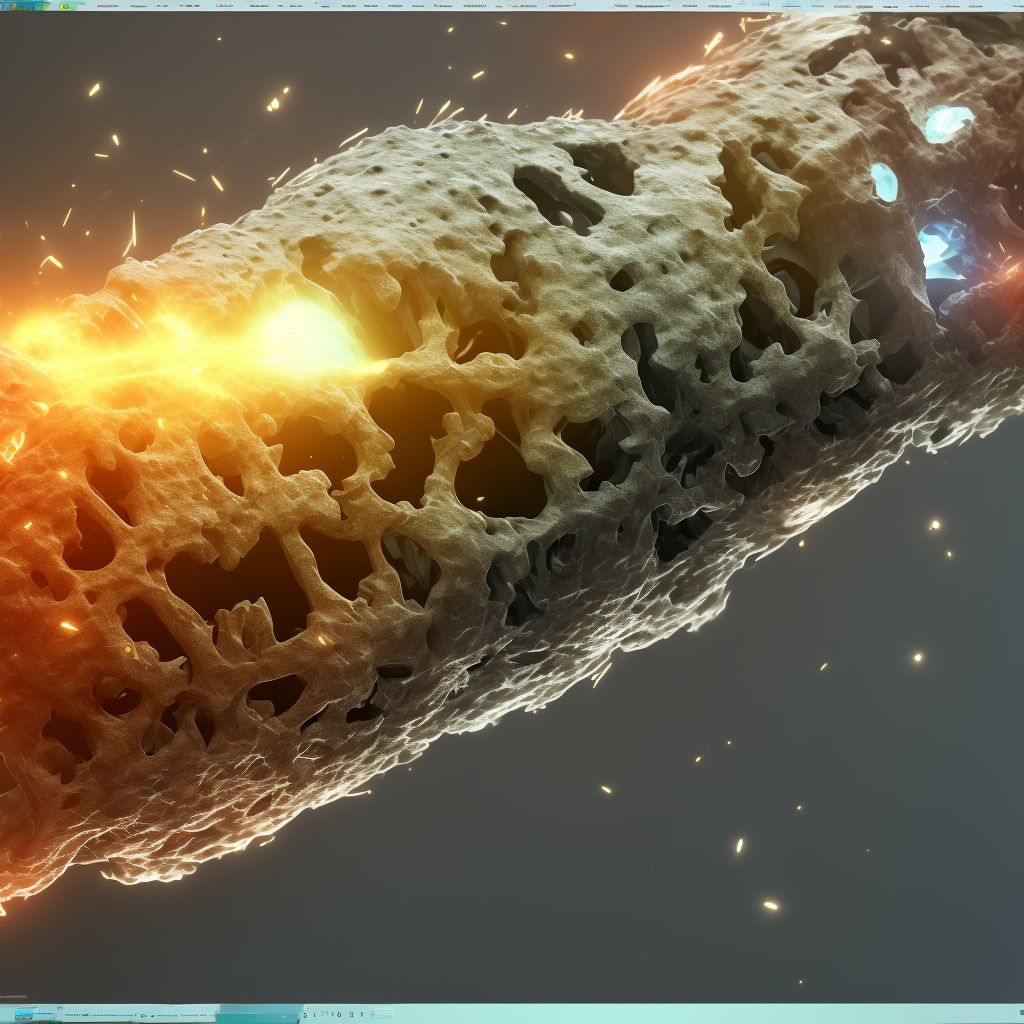
Displaced comminuted fracture of shaft of left tibia, subsequent encounter for open fracture type I or II with malunion Save
ICD-10 code: S82.252Q
Disease category: S82.252: Displaced comminuted fracture of shaft of left tibia
Displaced Comminuted Fracture of Shaft of Left Tibia: Understanding Malunion
A displaced comminuted fracture of the shaft of the left tibia is a severe injury that requires medical attention. In some cases, it can lead to malunion, a condition where the fractured bone heals in a misaligned or abnormal position. This subsequent encounter for open fracture type I or II with malunion is a critical stage in the patient's journey toward recovery.
It is important to note that malunion occurs when the fractured bone fails to heal properly, resulting in a deformity. This can lead to functional limitations, pain, and cosmetic concerns for the patient. Therefore, understanding the implications of malunion is vital for both healthcare professionals and patients.
During the subsequent encounter, medical professionals will thoroughly evaluate the patient's condition. This assessment involves examining the alignment of the healed bone, assessing the range of motion, and identifying any potential complications. By obtaining a comprehensive understanding of the malunion, healthcare providers can develop an appropriate treatment plan.
Malunion can have a significant impact on a patient's daily life. It may affect their ability to walk, engage in physical activities, or perform routine tasks. In some cases, patients might experience chronic pain or discomfort due to the malalignment of the bone. Therefore, addressing malunion is crucial to improving the patient's quality of life.
- Thorough evaluation of malunion
- Assessment of functional limitations
- Determining potential complications
- Treatment planning
Medical professionals will carefully consider the best course of action to address the malunion. Treatment options may include corrective surgeries, physical therapy, or the use of assistive devices to improve mobility. However, it is important to note that the specific treatment plan will depend on various factors, such as the severity of the malunion and the patient's overall health.
In conclusion, a displaced comminuted fracture of the shaft of the left tibia can result in malunion, which requires a subsequent encounter for evaluation and treatment planning. By addressing malunion appropriately, healthcare professionals can help patients regain their mobility, alleviate pain, and improve their overall quality of life.
Treatment of Displaced comminuted fracture of shaft of left tibia, subsequent encounter for open fracture type I or II with malunion:
Treatment Options for Displaced Comminuted Fracture of Shaft of Left Tibia
A displaced comminuted fracture of the shaft of the left tibia is a complex injury that requires careful treatment and management. When it comes to open fractures with malunion, proper care and treatment are crucial for optimal recovery and restoration of function. Here are some treatment options commonly us...
To see full information about treatment please Sign up or Log in